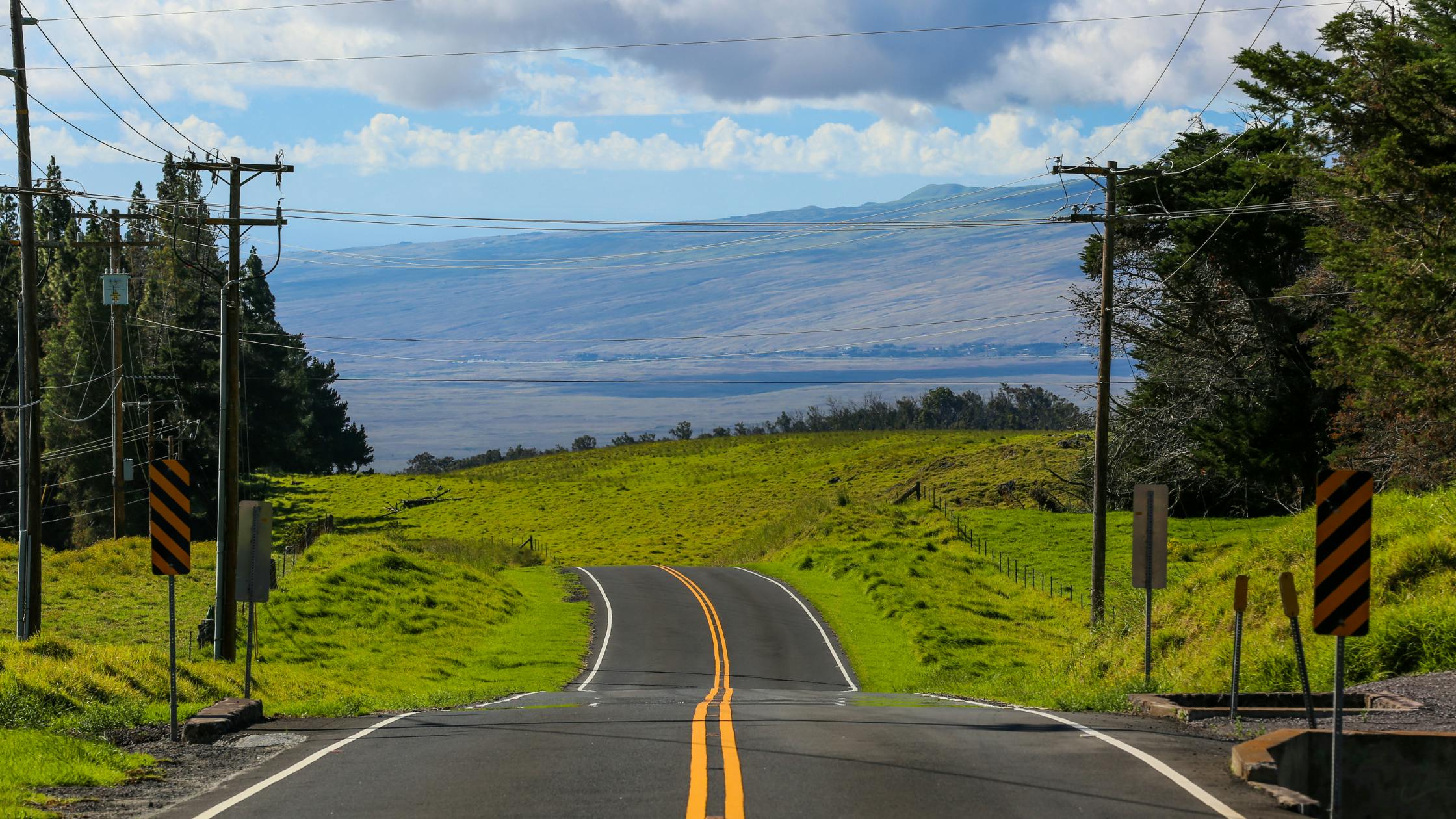There was a time not too long ago when Saddle Road Hawaii was a forbidden trek: a route banned by car rental companies and shunned by guidebooks.
But recent improvements have made this stretch of Big Island Highway a pleasant drive, and a great way to cut down travel time between Hilo and Kona.
But should you journey along Saddle Road during your Hawaii Island vacation?
Saddle Road 101
Saddle Road is a 52-mile highway that connects east and west Hawaii Island. It takes you between Mauna Kea and Mauna Loa and is the fastest way to travel between Hilo and Kona.
However, Saddle Road doesn’t completely connect the two destinations. From Hilo, Saddle Road will only take you as far as Waikoloa. From there, you’ll need to hop on Route 190 and travel another 25 miles to reach Kona.
Saddle Road is also how you’ll access the summits of Mauna Kea.
This stretch of road is also called Route 200, or Daniel K. Inouye Highway. But most locals and visitors call it Saddle Road.
The History of Saddle Road Hawaii
If you travel along Saddle Road today, you may be surprised to discover that it once had a sordid reputation. The road first opened in 1942 as a single-lane military access. After the route was handed over to the state, little was done to maintain or improve it.
In the decades that followed, Saddle Road Hawaii earned a reputation as the most dangerous road in the state. There was crumbling pavement, single-lane bridges, and miles of narrow stretches. All of that was intensified by the high-altitude fog that obscured visibility.
In 2007, the state began improvements on Saddle Road that would continue over the next decade. Today, visitors and residents alike are able to enjoy a vastly improved route between east and west Hawaii Island.

Your Trip on Saddle Road
Ready for your own adventure along Saddle Road? Whether you are headed to a volcano’s peak or an oceanside oasis, Saddle Road will get you there. Here are our top tips for enjoying your journey on the new and improved road.
- Bring along snacks and make sure you have a tank full of gas before heading out on this highway.
- Plan for extra time, as you may want to may want to stop at a scenic park, travel up to the Mauna Kea visitor center, or see Lake Wai’au.
- Be prepared for times without cell phone signal.
- Drive carefully along Saddle Road in Hawaii. There may be low visibility because of fog, drivers looking at the scenery instead of the road, and everyday highway hazards.
Alternative Routes
It will likely take you under two hours to drive between Hilo and Kona via Saddle Road. But there are a couple of alternatives.
You can travel on the northern part of the island along the Hamakua Coast. If you drive the road without stopping, it will take about 2 hours, but this scenic route begs to be taken slowly. Waimea will likely be the highlight of your drive.
And then there is the option to take the slowest route of all along the southern coast. This 3+ hour-long trek will take you by Volcanoes National Park and through the state’s youngest lava rock formations. Sometimes the road can be closed off, and it is tricky in some spots, so it’s not our top recommendation.
If you are trying to get from one side of Hawaii Island to another, Saddle Road will be your fastest route. Plus, you’ll get some unique scenery along the way and a rare chance to drive between two active volcanoes.




